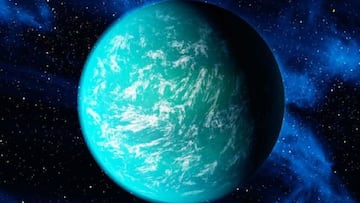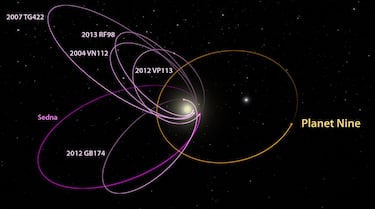The mystery of the supposed Planet 9 in the solar system that no one has yet found
Recent research brings the possibility of its existence closer, although there is still no absolute certainty.

There are eight known planets in the solar system: Earth, Mars, Uranus, Neptune, Pluto, Saturn, Venus, Mercury, and Jupiter. However, some scientists believe that there is a ninth planet hiding among the stars. No one has found it, and no theory or observation has been able to prove it. In 2016, researchers at the California Institute of Technology (Caltech) claimed to have found evidence for the existence of a giant planet with a mass 10 times that of Earth and an orbit around the Sun that would take between 10,000 and 20,000 years to complete:
“This would be a real ninth planet,” commented Mike Brown of the research team. “There have only been two true planets discovered since ancient times, and this would be a third. It’s a pretty substantial chunk of our solar system that’s still out there to be found, which is pretty exciting.” It should be noted that this discovery was made using mathematical and simulation models, not direct observation. As might be expected, not all scientists agreed with these conclusions, with some arguing that the evidence was inconclusive.

When NASA found the star Earendel in 2022, there was speculation that it might be Planet 9, but it was later concluded that it was a star, specifically the most distant star ever observed - it is 12.9 billion light-years from Earth. The fact that it has not yet been discovered does not mean that it does not exist. In fact, Caltech researchers have published a new scientific paper that aims to prove the existence of the elusive planet. The research is based on the study of a series of trans-Neptunian objects (TNOs).
New P9 evidence comes from a population of dynamically unstable long-period TNOs that cross Neptune's orbit. Full paper here: https://t.co/0f6SQHZ2Rv and a brief thread below. pic.twitter.com/oQDHvnmsMk
— Konstantin Batygin (@kbatygin) April 18, 2024
Related stories
“Given their dynamic instability, only two scenarios can maintain this population of TNOs in a steady state,” explained planetary science professor Konstantin Batygin on his X account. “They’re either driven inward by interplay between the Galactic tide and Neptune’s scattering, or they result from dynamics induced by Planet 9.″
The objects become unstable because they interact with Neptune’s orbit, so scientists determined that the action of this ninth planet must have played a role. Until the Vera C. Rubin Observatory is completed, the confirmation or not of the existence of Planet 9 is still up in the air.



Complete your personal details to comment